Silent Era Home Page > Home Video > The Kinetophone: A Fact! A Reality!

Reviews of silent film releases on home video.
Copyright © 1999-2025 by Carl Bennett
and the Silent Era Company.
All Rights Reserved. |
|
The Kinetophone
A Fact! A Reality!
(1913)
|
Contents: The Edison Kinetophone (1913), The Musical Blacksmiths (1913), Nursery Favorites (1913), The Deaf Mute (1913), The Edison Minstrels (1913), The Five Bachelors (1913), The Old Guard (1913), Jack’s Joke (1913) and The Politician (1913).
This collection of early synchronized sound films, produced by Undercrank Productions in association with Greenbrier Picture Shows, gives us a good sampling of the motion pictures featuring the still experimental film and sound cylinder system produced by the Edison company in 1913. Given the state of technology in 1913, it is reasonable to assume that we have an opportunity here to view and hear these films in better synchronization and audio quality, given the state of technology today, than was witnessed by audiences in their original runs.
The Edison Kinetophone films premiered in New York, New York, on 17 February 1913. The films utilized a crudely interlocked projector and phonograph cylinder playback system that often ran at slightly different speeds and required frequent manual, real-time resynchronization by the projectionist. While the films were presented in a handful of theatres throughout 1913 and into 1914, ultimately the inadequacies of the sound system were rejected by motion picture audiences.
Being a collection of musical, dramatic and comedic performances, this disc offers the following films with surviving film and soundtrack elements:
The Edison Kinetophone (1913) is an introduction to the Edison Kinetophone films in the form of an oratory by Allan Ramsay.
The Musical Blacksmiths (1913) features the Edison Quartette (O.J. McCormack, George W. Ballard, Leo Parmet and H.L. Wilson) in a musical performance.
Nursery Favorites (1913) features the Edison Quartette and early film appearances by Shirley Mason and Viola Dana.
The Deaf Mute (1913) is a Civil War drama of a Confederate spy who is captured by Union soldiers.
The Edison Minstrels (1913) is an odd melange of musical performances and comedy featuring Arthur Housman, Edward Boulden, O.J. McCormack, George W. Ballard and other members of The Edison Quartette.
The Five Bachelors (1913) is a comedy of a young man’s humiliating initiation into a woman-hating men’s club, The Five Jolly Bachelors.
The Old Guard (1913) stars Cora Williams and her real-life husband Albert H. Busby. An old veteran of the Napoleanic Wars recounts his memories and grants his blessings upon the marriage of his granddaughter and a young soldier. A bit of hokum that is indicative of stage productions from the early 20th century.
In Jack’s Joke (1913), Jack plays a joke on his friend by introducing him to a young woman he is told is hard-of-hearing. Oddly, the cast takes bows for audience applause at the end of the film.
The Politician (1913) is a comedy of a political boss who antagonizes his constituents when he delivers an oratory while being fed talking points from his daughter who is reading from the wrong newspaper. While the soundtrack is still missing, the film plays like a typical 1913 comedy.
The Kinetophone films were no longer than six minutes in running time due to the limited recording length imposed by the modified Edison phonograph system, which used large cylinders (not flat gramophone discs — which are mistakenly called phonograph records today) to record and reproduce the synchronized soundtrack.
Overall, our evaluation of the Edison Kinetophone sound film process would be something like that of contemporary audiences: while the sound is admittedly occasionally intelligible, the aural limitations of the acoustically recorded phonograph cylinder coupled with the limitations of mechanical (not electrical) theatrical amplification make the experience of Kinetophone films a definite curiosity and something of a strain. Here, modern audiences enjoy the advantage of digital audio filtering and noise reduction (and the quality of their own home amplification equipment) to view these films under better circumstances than the audiences of more than 100 years ago. This collection has been a long time coming and is of great historical value.
— Carl Bennett
|
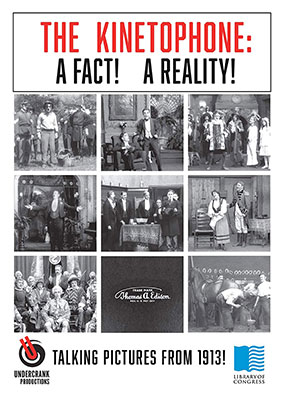 Undercrank Productions Undercrank Productions
2018 DVD edition
The Kinetophone: A Fact! A Reality! (1913), black & white, 76 minutes total, not rated, including The Edison Kinetophone (1913), black & white, 3 minutes, not rated, The Musical Blacksmiths (1913), black & white, 6 minutes, not rated, Nursery Favorites (1913), black & white, 6 minutes, not rated, The Deaf Mute (1913), black & white, 6 minutes, not rated, The Edison Minstrels (1913), black & white, 6 minutes, not rated, The Five Bachelors (1913), black & white, 6 minutes, not rated, The Old Guard (1913), black & white, 6 minutes, not rated, Jack’s Joke (1913), black & white, 6 minutes, not rated, and The Politician (1913), black & white, 6 minutes, not rated.
Undercrank Productions, no catalog number, no UPC number.
One single-sided, single-layered, Region 0 NTSC DVD-R disc; 1.33:1 aspect ratio picture in full-frame 4:3 (720 x 480 pixels) interlaced scan image encoded in SDR MPEG-2 format at ? Mbps average video bit rate (capable of progressive scan upscaling to ? fps); Dolby Digital (AC3) 2.0 mono sound encoded at ? Kbps audio bit rate; English language intertitles, no subtitles; chapter stops; standard DVD keepcase; $19.98.
Release date: 7 August 2018.
Country of origin: USA
Ratings (1-10): video: 7 / audio: 5 / additional content: 6 / overall: 6.
|
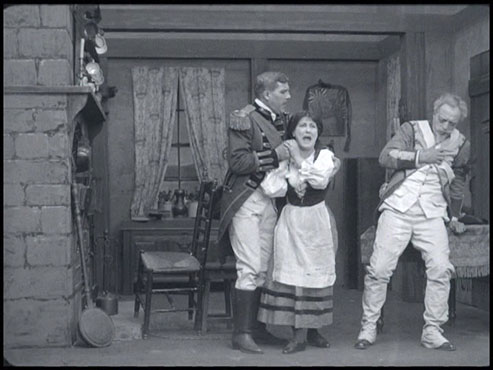
This DVD collection has been transferred from 35mm source materials on a Lasergraphics ScanStation at the Library of Congress film archive. The film prints range from good to excellent depending on whether the source materials are 35mm duplicate prints, 35mm original nitrate prints or the original 35mm nitrate camera negatives. On average, the visual quality is very-good.
The Edison Kinetophone (1913) was resynchronized to an incomplete 35mm source print from one take matched with a cylinder sound recording from another take (or version). An edition of the film posted on YouTube shows Allan Ramsay walking out from a proscenium archway prior to beginning his speech; that bit of footage has been edited out of this edition to where the surviving soundtrack begins. Also, one crossfade bridges film print sections with their surviving audio. We might assume that the original film was approximately six minutes long, as are other films on this disc. Perhaps the roughest print utilized for this collection, the good to very-good 35mm source material is moderately scuffed, with the beginnings of nitrate decomposition and a higher amount of dust and speckling than other prints collected here.
The Musical Blacksmiths (1913) has been scanned from a 35mm source print, rendering a very-good range of greytones with soft image details. The quality is similar to other films of the day that have survived in duplicate prints.
Nursery Favorites (1913) has appeared on home video before but is presented here in its best available form, scanned from a 35mm source print held by the Library of Congress. The results feature a reasonable greyscale range and very-good image detail.
The Deaf Mute (1913) is thought to be the only Kinetophone film that was shot outside a sound stage, outdoors. The 35mm source print has been scanned with a reasonable greyscale range, which renders a good to very-good image that is soft of image details.
The Edison Minstrels (1913) was resynchronized using the surviving film materials from the American version matched with the surviving cylinder recording from the British version. The sound synchronization is good until the cast begins singing “God Save the King” while the picture shows them singing “The Star-Spangled Banner”. The original 35mm nitrate camera negative was scanned for this presentation, rendering excellent image detail and a broad range of greytones.
The Five Bachelors (1913) has been scanned from a good to very-good 35mm source print, which is soft of image detail and features a reasonable range of greytones.
The Old Guard (1913) has been scanned from the original 35mm nitrate camera negative, which features a broad range of greytones and very-good to excellent image detail. Unfortunately, the dialog of the performances can be difficult to understand due to the quality of the actors' voices, the fast delivery pace of the dialog and how it recorded onto the sound cylinder, and the high background noise level (despite its digital audio restoration) of the surviving soundtrack cylinder.
Jack’s Joke (1913) has been scanned from the original 35mm nitrate negative, which is highly detailed and features a balanced greyscale range and a light amount of dust and speckling. An absolute pleasure to watch.
The Politician (1913) is presented here without its original soundtrack, as there appears to be no surviving cylinders. The film is presented with a piano score performed by Ben Model. The source print is very-good to excellent and the film scan is balanced and detailed.
The films are accompanied by their original synchronized Edison phonograph cylinder recordings (with the two noted exceptions).
The supplemental material is a short featurette, So Amazingly Perfect They Are Really Weird (2018), that covers the history and the restoration of Edison Kinetophone films, hosted by Geo. Willeman of the Library of Congress (25 minutes). The featurette contains the best-looking and complete presentation of the very brief [Dickson Experimental Sound Film] (1895) and an excerpt from Carmencita (1894).
This is a collection we have hoped would be produced over the years and now we are happy to highly recommend this edition, which is well worth its modest cost.
|
This Region 0 NTSC DVD-R edition is available from
UNDERCRANK PRODUCTIONS through . . .
|

|
|
|
Other EARLY SOUND FILMS of the silent era available on home video.
|
|

LINKS IN THIS COLUMN
MAY TAKE YOU TO
EXTERNAL WEBSITES
•
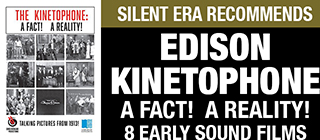
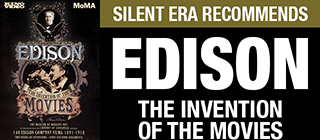


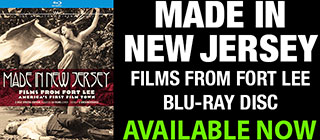





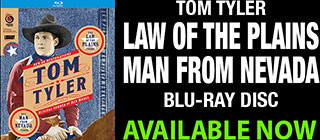
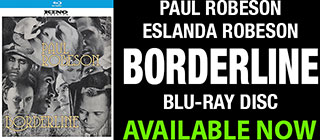
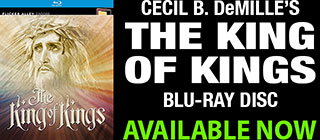


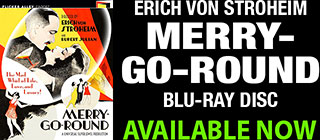

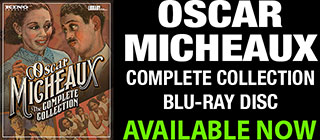

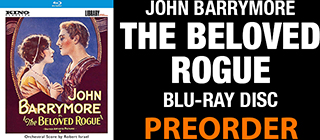
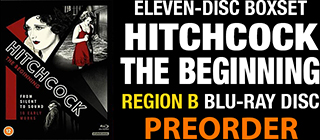
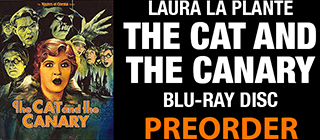

•
|




































